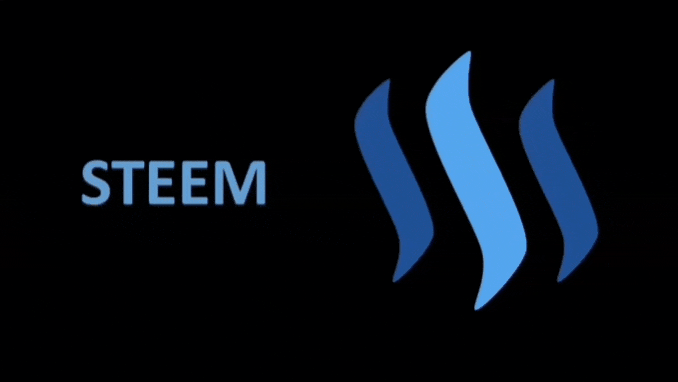Hi Everyone,
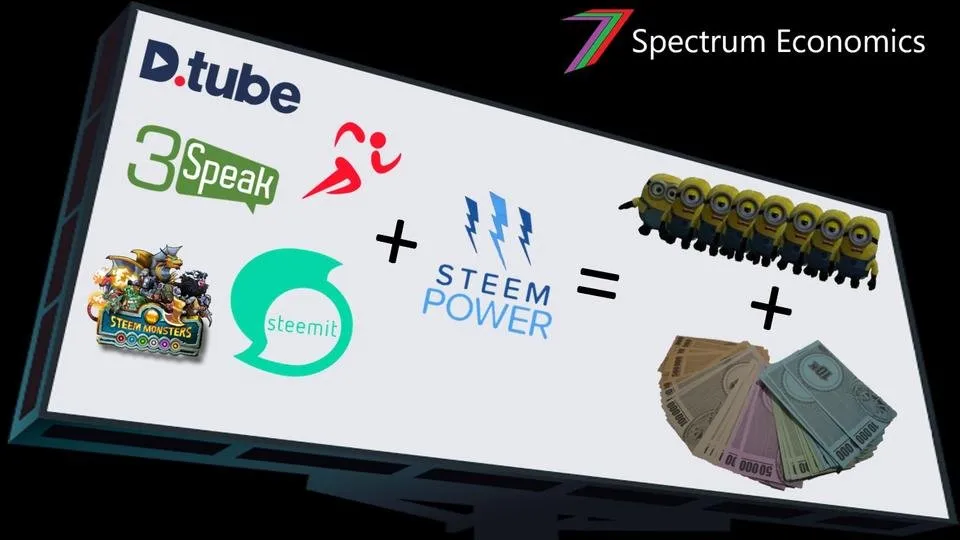
Steem DApps are forming a very important part of the Steem ecosystem. They add variety in how we access information on the blockchain. They also add interesting and fun features that make them attractive to users. Steem has DApps suitable for many different types of users.
For users that want a different interface to explore Steem content we have Busy, SteemPeak, eSteem, and Partiko. For users that like games we have Steem Monsters and Next Colony. For users that like videos we have DTube, 3Speak, and Vimm. For music, we have DSound. For photo sharing, we have APPICS and Steepshot. For online polls, we have DPoll. For travellers we have Trips.teem and TravelFeed. For those that want to share their dining experience we have Tasteem. Steem even has its own online fitness and exercise tracker, Actifit. The list goes on and that is not even including the new tribes with their own tokens.
Revenue and users
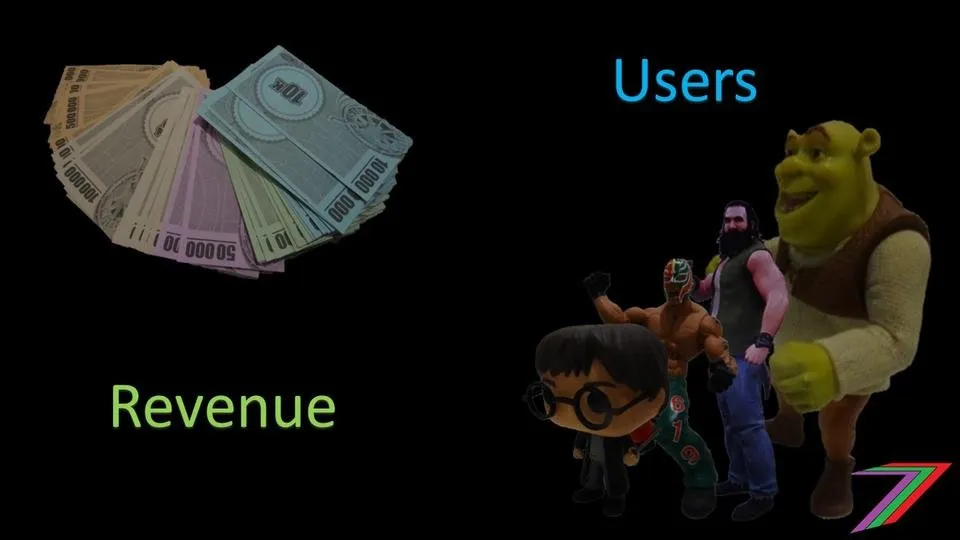
Having the DApps is great but these Dapps need more users and a reliable revenue stream. One of the most effect methods of raising revenue is through advertising. For advertising to be effective requires users and viewers of content. Having an interesting and user friendly interface can attract and maintain users. However, it is often the case that users attract more users. Facebook and other social media rapidly gained popularity because other people used them. It had a network effect. The largest draw for Steemit (original Steem DApp) was the rewards to content creators. Several of the very early adopters received very high payouts for their posts. This was because there were very fewer users at the time, the rewards pool was significantly larger and the N^2 rewards curve distributed rewards to the heavily upvoted posts.
Loss of users

The change to non-linear rewards, reduction of the size of rewards pool, vote selling, self-voting, voting circles and the fall in price of Steem has contributed to lower rewards for all content creators. Proof-of-stake is dominating distribution of Steem over Proof-of-Brain. The content creators attracted by the rewards have mostly left. Those that remain have either invested in Steem to capitalise on Proof-of-Stake, stayed because of the community, or are holding onto hope that content creating will become more profitable.
Changes that may turn the tide

This unfortunate trend could soon be reversing. The arrival of Steem Engine and the tokenised tribes offers an alternative revenue stream to content creators. The tribes also offers easier content discovery and more opportunities for more popular content to be rewarded. HardFork 21 includes the Economic Improvement Proposal (EIP). The curation rewards will be changed to a 50/50 split between content creator and curator, a downvote mana pool will be added, and the rewards curve will be changed to a mild non-linear curve. These changes should encourage larger stakeholders to use their Steem Power to curate content rather than self-vote or sell votes. Hardfork 21 also includes the Steem Proposal System (SPS). The funded proposals from this system could be used to attract more users. For example, an advertising campaign might be funded.
Even with the changes explained in the previous paragraph, vote selling and self-voting are likely to reap the highest return in terms of Steem. Unfortunately, vote selling and self-voting is rewarding users for not looking at content. Vote selling and self-voting involves profiting from the existing rewards pool. What one person gains another person loses; this is similar to what is called a ‘zero sum’ game in economics. A better way to earn revenue would be to draw it into the system rather than compete for it in the system.
Sharing advertising revenue
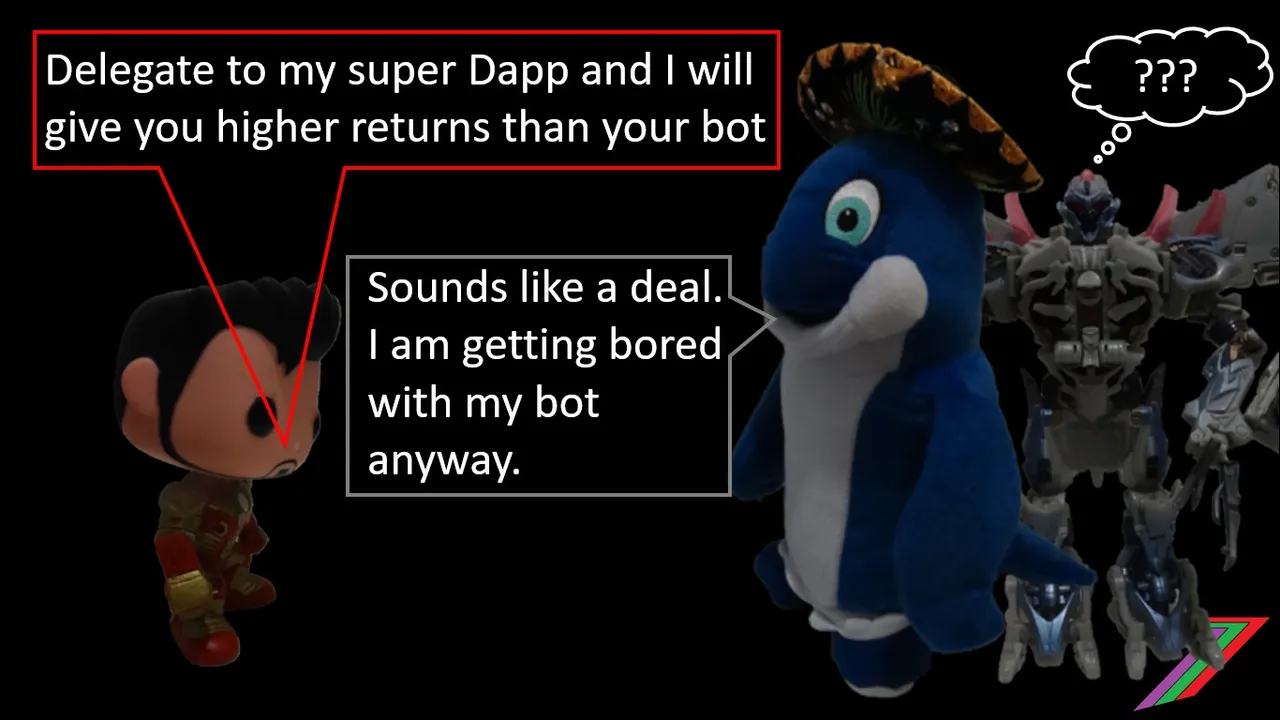
This brings me back to the idea of advertising. The current changes are likely to attract more users, which will make including advertisements in DApps more viable. DApp teams can attract more users by upvoting content of existing users. However, upvotes will be worth very little without the support of Steem Power. DApp owners would probably rather use their funds to develop and upgrade their DApps rather than tying up large amounts of capital in Steem Power. Steemit Inc delegates Steem Power to several DApps. These include:
- DTube
- Steempress
- Steemhunt
- Tastem
- eSteem
The community supports a few other DApps. These include 3Speak supported by @curatorhulk and @drbanner, and Steem Monster are supported by many members of the community.
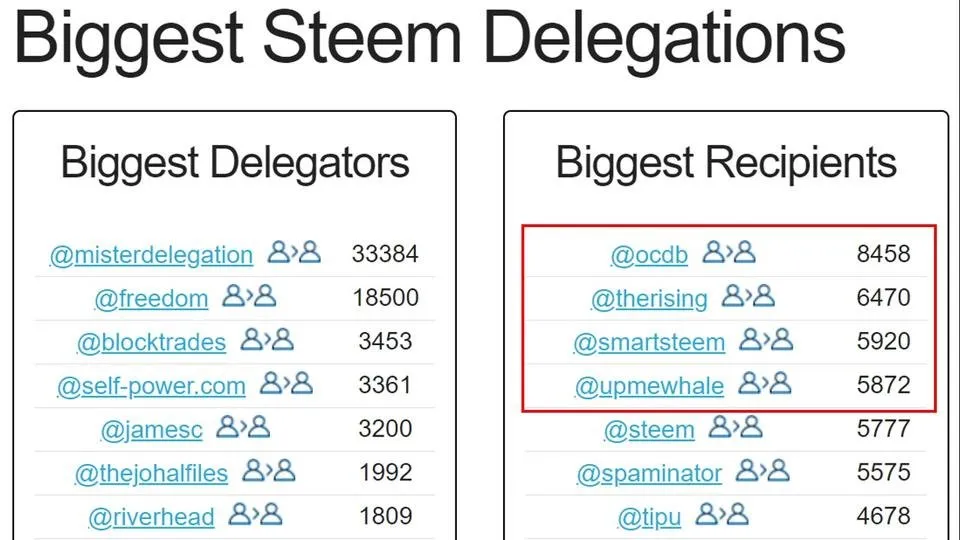
Source: Steem Reports accessed 25/08/2019
The recipients of the most Steem Power are bid bots and vote selling services; i.e. top 4 recipients of delegated Steem Power are bid bots and vote selling services. The reason that these services are more supported than DApps is because of returns. What if DApps could return as much or more than bid bots and vote selling services? Increasing curation rewards to 50% of the post payout is a big step in that direction.
What would someone delegating to a bid bot expect to earn after Hardfork 21?
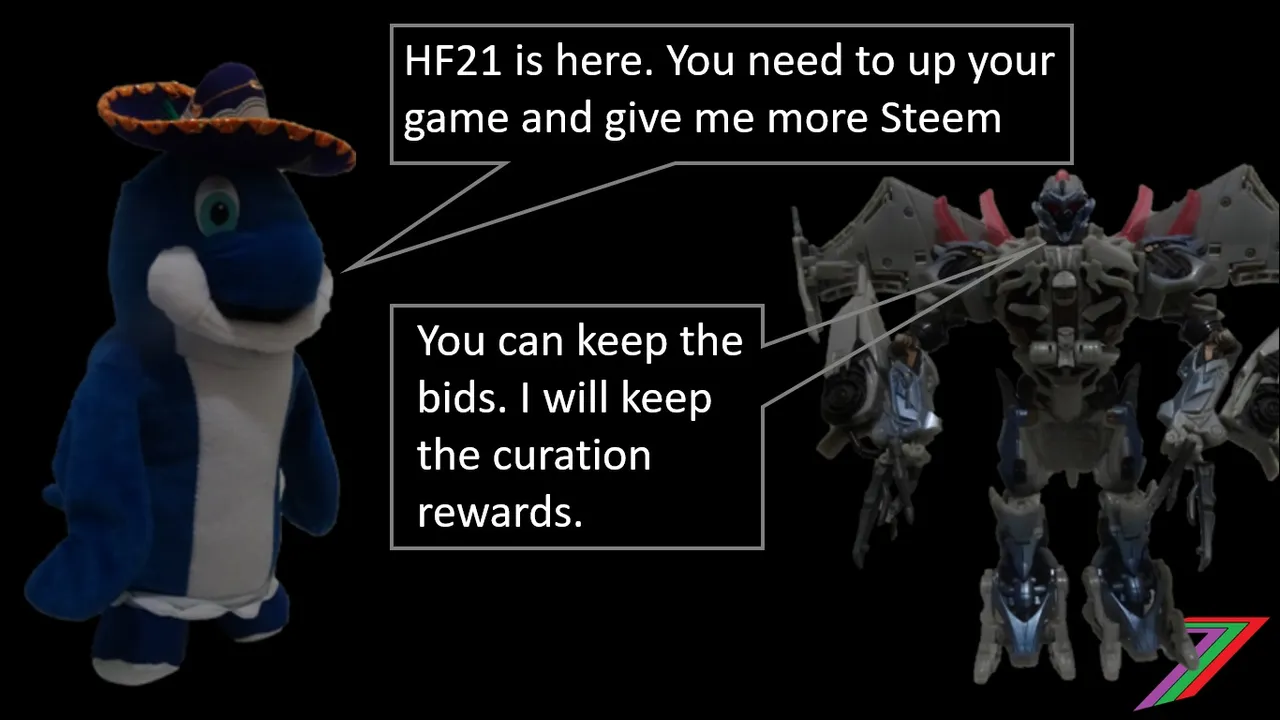
What is the total return to a bot? Curation rewards to bots will be lower than 50%. This is because users can anticipate bot votes and therefore vote before them. I anticipate this to increase with higher curation rewards. Let’s assume that bots obtain 40% curation rewards. The inclusion of free downvotes could lower this further. Bots also offer return on investment (ROI) to vote buyers. Let’s assume buyers pay 45% of the value of the vote to the bot service. At this point, a full vote would be worth 85% to a bot. The bot owner and/or vote selling service would want a cut for their effort. Let’s assume 15%. The delegator would receive approximately 70% of the value of delegating a full upvote to a bot.
What could someone delegating to a DApp expect to earn after Hardfork 21?
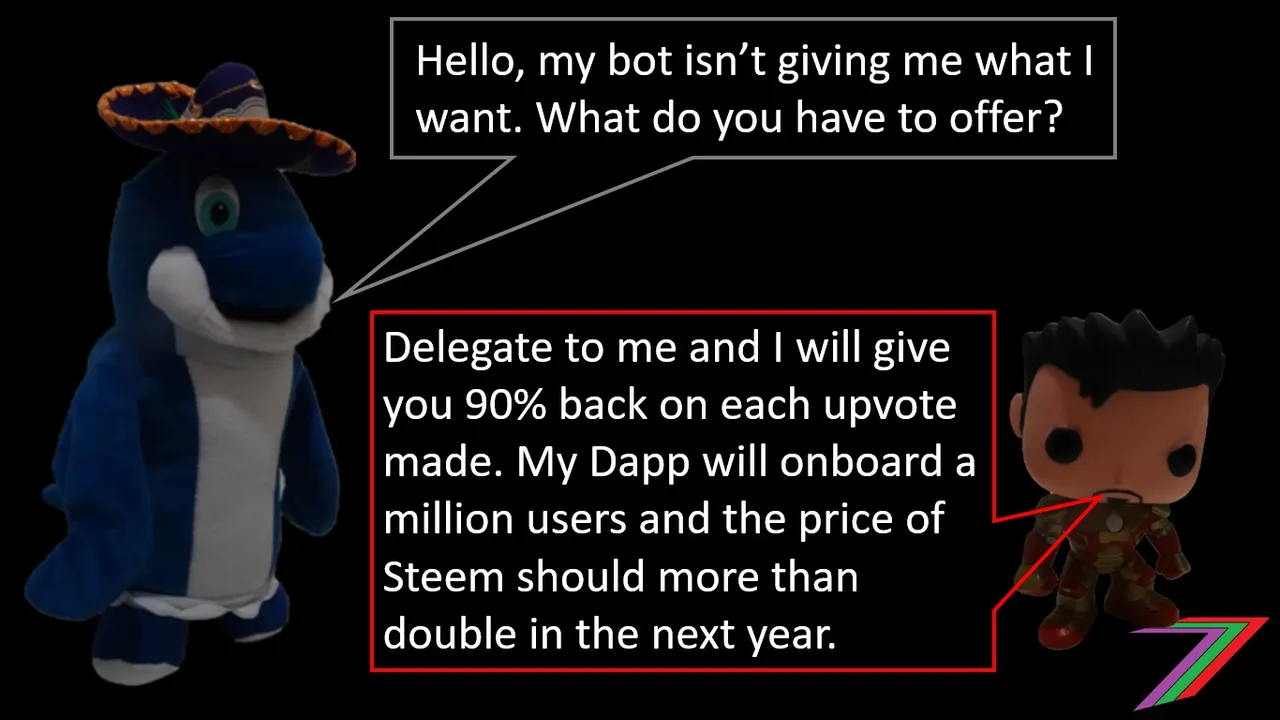
A DApp owner could time votes to increase curation rewards to above 50%. For the sake of this post, let’s assume that DApp votes return exactly the 50% curation rewards. If there are no other revenue streams, the DApp can only sustainably return 50% per a vote to a delegator. This is 20% less than what I would expect a vote selling service to return. Investors may still prefer to delegate to a vote selling service. If DApps allow advertising, they can share the advertising revenue with delegators. To entice delegation, DApps will need to offer 70% per vote back to the delegators. For this to be possible, DApps will need advertising revenue equivalent to half of what they earn from curating.
Why would DApps share advertising revenue with delegators?
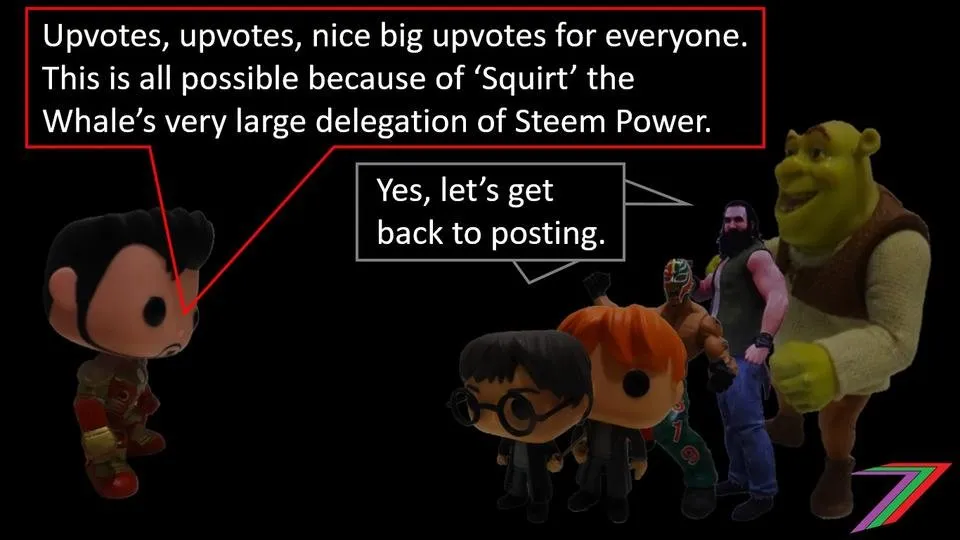
Steem Power is a valuable commodity to a DApp. It enables them to distribute higher rewards to more users. Higher rewards will attract more users as well as maintain existing users. DApp teams also have full say of how their Steem Power is used. For example, users that create particularly high quality content or content that is a very good representation of the DApp can be sufficiently rewarded to keep them using the DApp. If the DApp team uses their Steem Power wisely, they should be able to increase their user base as well as the quality and popularity of content on their DApp.
Attracting more users to a DApp will increase the advertising revenue to the DApp. Therefore, delegators are being rewarded for attracting advertising revenue.
The DApps can apply the same logic using their own tokens as well. A delegator to a DApp can be rewarded in both Steem and the DApps token.
Additional revenue from subscription fees
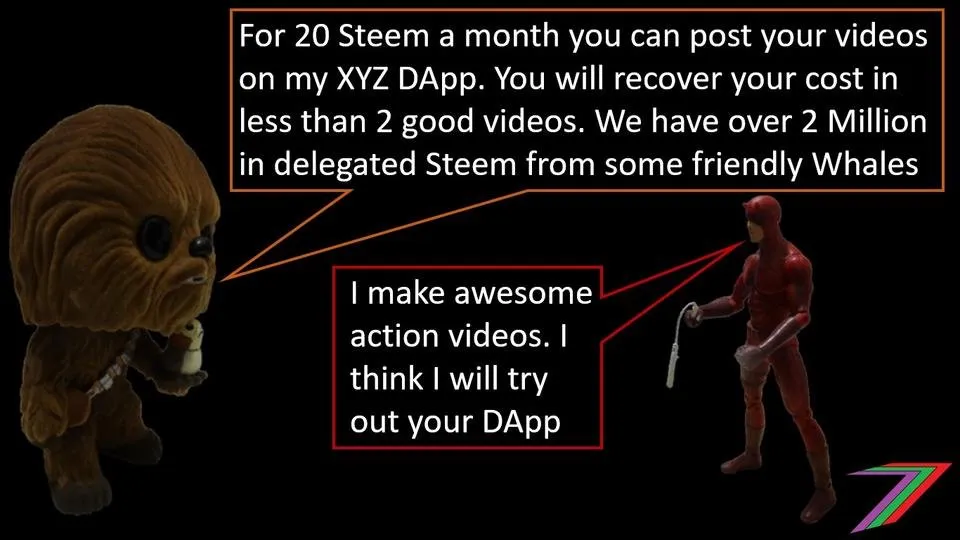
Advertising is just one method of raising revenue for DApps. DApps could also charge a small fee for usage. For example, 3Speak charge a small monthly subscription fee for users who wish to post videos to their DApp. Charging a subscription fee becomes a more viable option if the DApp has access to more Steem Power. The Dapp team can give higher upvotes, which can more than cover the cost of the subscription fee. Part of the subscription can be paid to delegators to further improve their return.
The great realisation that we need eyes on content
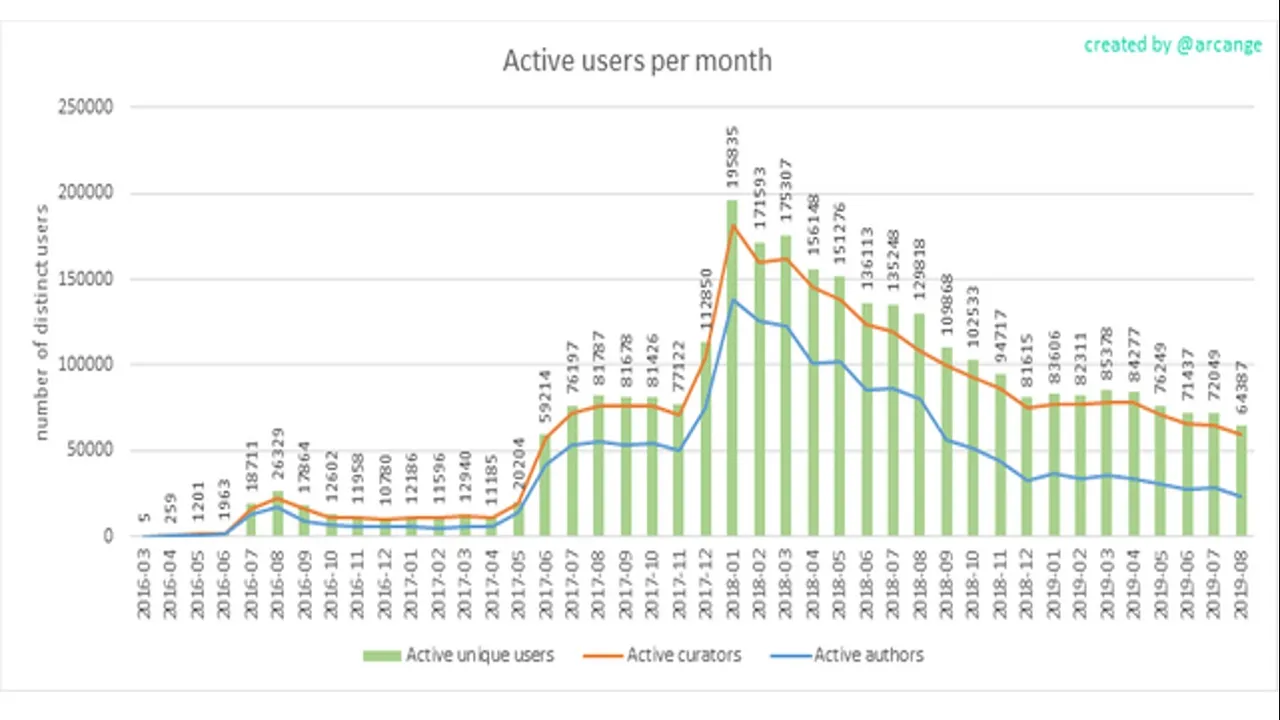
Source: @arcange Steem Statisitcs, accessed 25/08/2019

Source: Coinmarketcap, accessed 25/08/2019
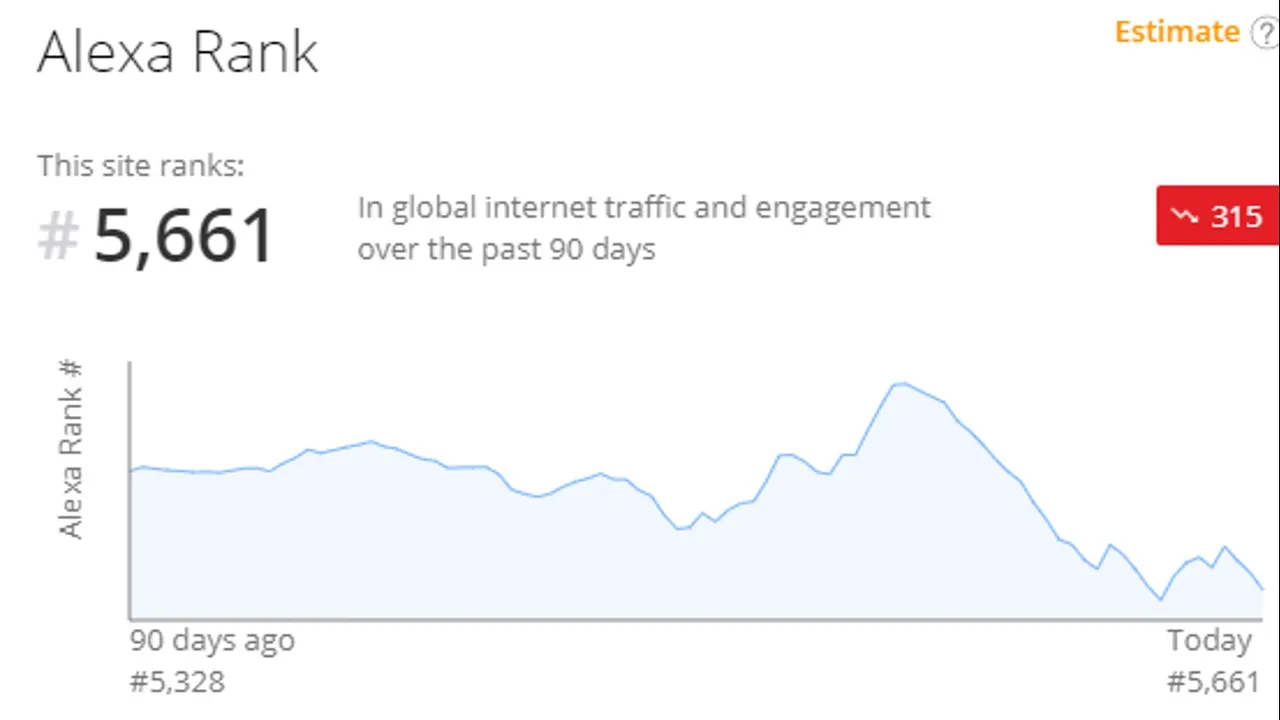
Source: Alexa.com, accessed 25/08/2019
The decline in users, Steem price, and Alexa rating/rank provides a strong indication that something is wrong. That something appears to be lack of attention. More people want out than in. This is shown by both usage and direction of money. DApps have the potential to attract both users and money, they will be far more effect with the support of Steem Power. Bots also have the potential to attract money but at the same time discourage users, which eventually results in money leaving.
The recent changes and proposed changes to the Steem ecosystem demonstrates a realisation that the success of the Steem ecosystem strongly depends on capturing attention. One of the keys to obtaining that attention is rewarding popular content and offering it as much exposure as possible. DApps with Steem Power can do that.
Curation by DApps vs individual curators

Curation by individuals is theoretically the best use of Steem Power. However, there are two major problems with individual curation. At this point, Steem Power is concentrated in the hands of a few major stakeholders. The views and opinions of these stakeholders are unlikely to be representative of the masses. The second problem is that curating content can be hard work, this is especially so when a user has a lot of Steem Power. To maximise curation rewards requires 10 full upvotes a day. To be an effective curator would require far more than 10 upvotes a day. I would guess the number of upvotes would probably be around a 100 a day (100 upvotes of an average weight of 10%). Autovotes might be able to cater for half those votes but a good curator would still need to spend time looking for content.
Delegating to a DApp, following curation trails, or delegating to a dedicated curator could resolve those two problems. If a DApp can obtain additional revenue from advertising or subscription fees, this will be more attractive to investors. DApp teams also have the additional motivation to reward users that will attract more users. Curation trails and curators could be more inclined to abuse the delegation they receive by secretly self-voting, vote selling or just supporting friends.
Conclusion
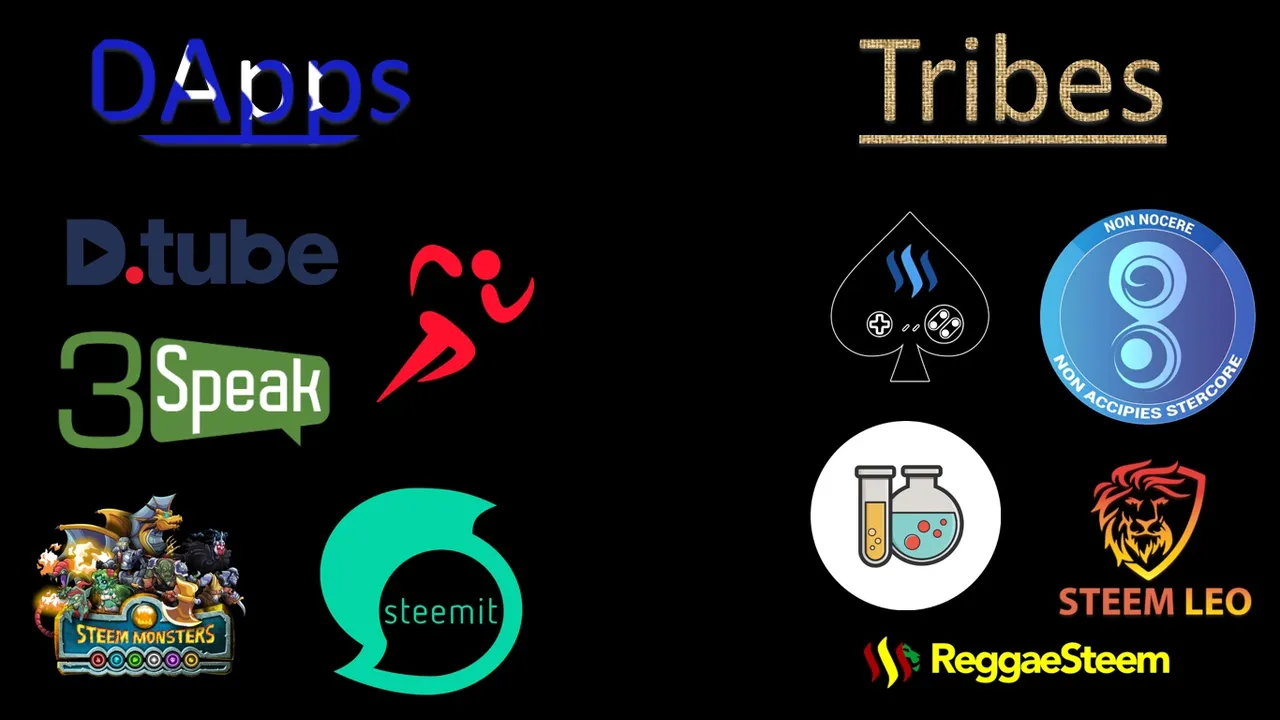
In my opinion, DApps and tribes are currently the two most exciting features on Steem. The growth of both these features could drive tremendous growth to the Steem ecosystem. The best way to accelerate this growth is through support from the community. Delegating Steem Power to these DApps is a great way to support them. However, DApps need to attract delegation by offering a good return to delegators. Revenue from advertising or from subscriptions can be used to finance this return.
Funding returns from revenue brought in externally is superior to funding returns from the rewards pool. The DApps could receive revenue directly paid in Steem, i.e. advertisers buy Steem and pay the DApps, or the DApps could receive revenue in another currency and convert it into Steem. Either way, this creates demand for Steem and pressure to increase the price. An increasing price is a benefit to all involved in the community.
This brings me to the end of this post. In the coming weeks I will discuss tribes and what they offer to the Steem ecosystem. I hope you enjoyed the post. Feel free to offer any feedback regarding the content discussed.
More posts

If you want to read any of my other posts, you can click on the links below. These links will lead you to posts containing my collection of works. These posts will be updated frequently.
New Economics Udemy Course
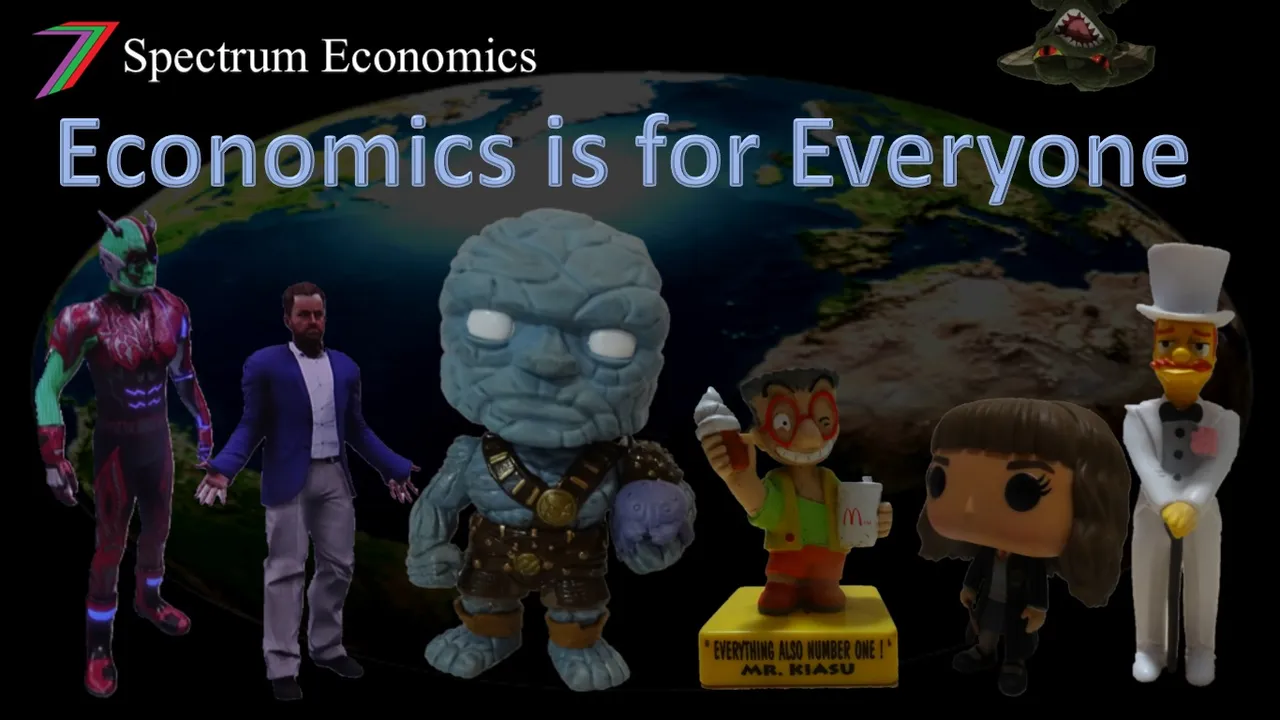
I have launched my first Udemy course ‘Economics is for Everyone’. The course focuses on how economics affects everyday people, the decisions they make and how they interact with the world around them. The course contains 24 video lectures (about 4 hours of viewing), 64 multiple-choice questions (3 at the end of most lectures), 32 downloadable resources (presentation slides, additional notes and links to relevant Steem posts), and 2 scenario questions. The course is currently free-of-charge. Click the link above to access the course.
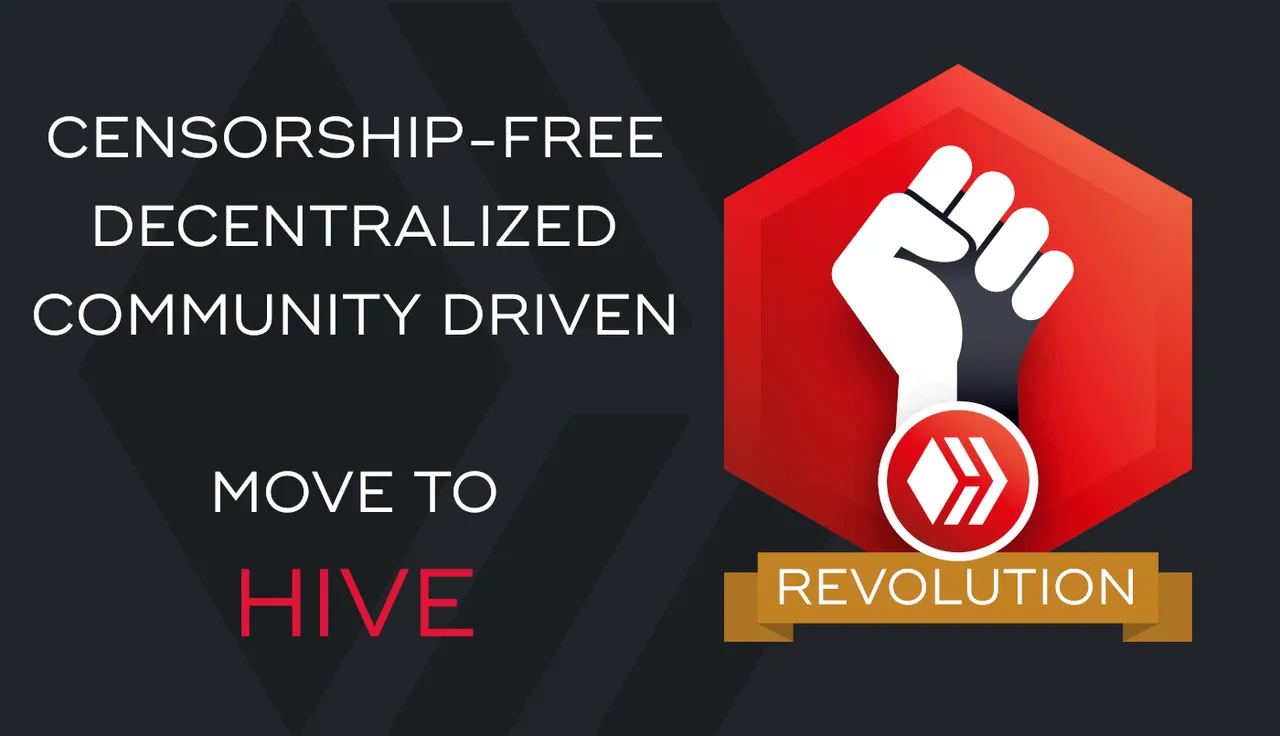



Steem - The Future of DApps
